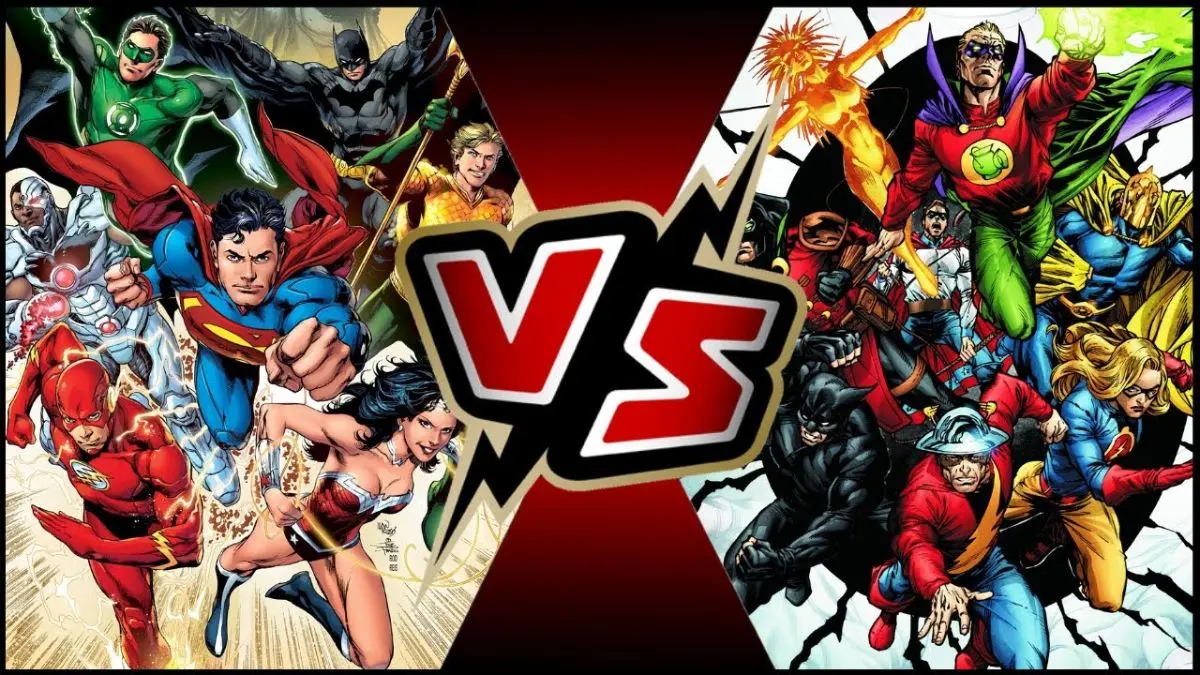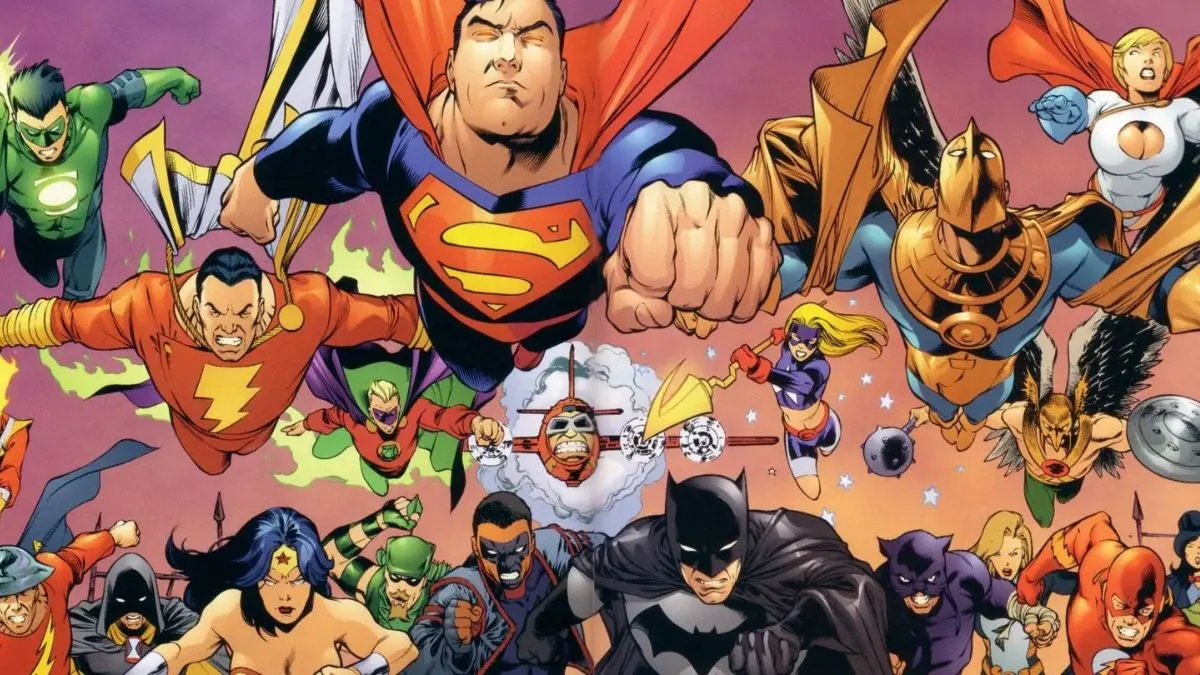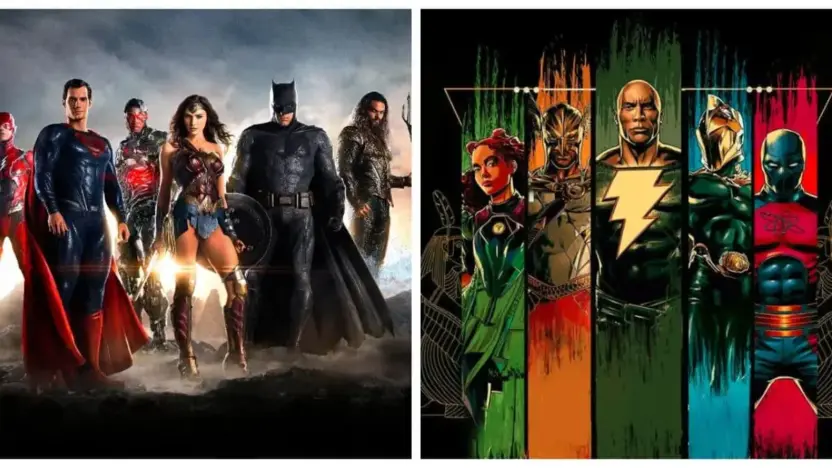In the vast universe of DC Comics, the existence of multiple superhero teams is pivotal. Amongst the myriad of groups, two teams have had a significant impact on comic book lore, namely, the Justice Society of America (JSA) and the Justice League of America (JLA). While both groups aspire to protect the world from malevolent forces, they vary in their origins, members, timelines, and impacts. This article “Justice Society vs Justice League: A Comparative Analysis” delves deep into the intricacies of both superhero factions to perform a comparative analysis.
Justice Society vs Justice League: A Comparative Analysis
Historical Background
Justice Society of America
The Justice Society of America, created in 1940, is considered the first-ever superhero team in comic books. The JSA hails from Earth-Two, a parallel universe within the DC Multiverse, and its members are heroes from the Golden Age of Comic Books. The original roster consisted of Doctor Fate, Hour-Man, the Spectre, the Sandman, the Atom, the Flash (Jay Garrick), Green Lantern (Alan Scott), and Hawkman.
Justice League of America
The Justice League, originating in 1960, is perhaps the most iconic superhero ensemble in comic books, encompassing superheroes predominantly from the Silver Age of Comic Books. Hailing from Earth-One, the original members include Superman, Batman, Wonder Woman, the Flash (Barry Allen), Green Lantern (Hal Jordan), Aquaman, and Martian Manhunter.
Membership Composition
Original Members
| Team | Members |
|---|---|
| JSA | Doctor Fate, Hour-Man, the Spectre, the Sandman, the Atom, the Flash (Jay Garrick), Green Lantern (Alan Scott), Hawkman |
| JLA | Superman, Batman, Wonder Woman, the Flash (Barry Allen), Green Lantern (Hal Jordan), Aquaman, Martian Manhunter |
Diversification and Expansion
Both teams have undergone substantial expansions and diversifications. The JSA welcomed members like Black Canary and Wildcat, focusing on a mix of supernatural and street-level heroes. The JLA, conversely, experienced an influx of cosmic, mystical, and metahuman heroes, such as Green Arrow, Black Canary (of Earth-One), and Hawkman (of Earth-One).

Philosophical Underpinnings
Justice Society of America
The JSA operates under the belief in legacy and mentorship. Older members mentor newer generations of heroes, emphasizing the importance of passing down values and skills. Their work is more clandestine, focusing on threats that are usually more obscure or mystical.
Justice League of America
The JLA, on the other hand, concentrates on overt threats, often of a global or cosmic nature. Their approach is more proactive and direct, intervening to prevent catastrophes and protect the world from imminent dangers. The JLA values collaboration and mutual respect amongst diverse superheroes, united by a common goal.
Temporal Context
Timelines and Eras**
| Team | Era | Timeline |
|---|---|---|
| JSA | Golden Age | 1940s |
| JLA | Silver Age | 1960s |
Evolution over Time
The JSA primarily operated during the 1940s, confronting threats during World War II and facing villains of their time. The JLA emerged two decades later, dealing with more advanced threats and exploring the cosmos, multiverse, and other dimensions, reflecting the evolving narrative preferences of their respective eras.
Symbolism and Influence
Legacy of JSA
The Justice Society symbolizes the foundational era of superheroes, representing hope during the grim times of World War II. They laid the groundwork for the concept of superhero teams and served as the template for subsequent ensembles. Their emphasis on legacy has had a long-lasting impact on the DC Universe, spawning multiple generations of heroes who look up to the JSA as pioneers.
Impact of JLA
The Justice League represents the amalgamation of diverse powers and personalities coming together for a common purpose. They have become synonymous with the term “superhero team” and are the face of the DC Universe. The JLA’s extensive and varied roster has allowed for the exploration of complex themes and interactions, impacting not only comic books but also animated series, movies, and merchandise.
Iconic Story Arcs
Memorable JSA Narratives
The JSA has been part of iconic storylines, such as “Crisis on Infinite Earths,” where they played crucial roles in battling the Anti-Monitor and saving the multiverse. Their stories often revolve around themes of time, legacy, and the supernatural, providing a rich narrative tapestry.
Noteworthy JLA Storylines
The JLA has starred in seminal arcs like “The Final Crisis” and “Infinity Crisis,” dealing with universe-altering events and existential threats. The League’s tales are monumental, often involving clashes with formidable foes like Darkseid and the Legion of Doom, reflecting the escalating stakes in modern comic storytelling.

Adaptations and Media Presence
JSA in Media
The Justice Society of America has had a more subtle presence in media, featured in animated series and live-action shows like “Smallville” and “Stargirl,” emphasizing their role as mentors and legacy bearers.
JLA’s Media Dominance
The Justice League boasts a massive media footprint, including animated series like “Justice League Unlimited,” multiple animated and live-action movies, and video games. Their stories and characters have been adapted into various media, solidifying their status as cultural icons.
Conclusion
The Justice Society of America and the Justice League of America, while rooted in the same ideals of heroism and justice, represent different aspects and eras of the superhero genre. The JSA, originating from the Golden Age, is a symbol of legacy and the foundational era of superheroes, emphasizing mentorship and the passing down of values. Their stories are steeped in the context of their times, dealing with threats and challenges relevant to the 1940s.
In contrast, the JLA, born in the Silver Age, reflects the evolution and diversification of the superhero narrative, dealing with global, cosmic, and existential threats. They symbolize the unity in diversity and the collaboration of various superheroes, each bringing their unique powers and perspectives to the table. The Justice League’s stories are monumental, dealing with high stakes and formidable foes, representing the ever-evolving narrative landscape of comic books.
Both teams have left an indelible mark on the comic book world and popular culture, influencing generations of readers, creators, and adaptors. While their approaches, timelines, and themes may differ, the JSA and JLA are united by their unwavering commitment to justice, heroism, and the protection of the innocent, proving that no matter the era or the challenge, heroes will always rise to defend the world.
Also Read: Aspects Where DC Outshines Marvel



